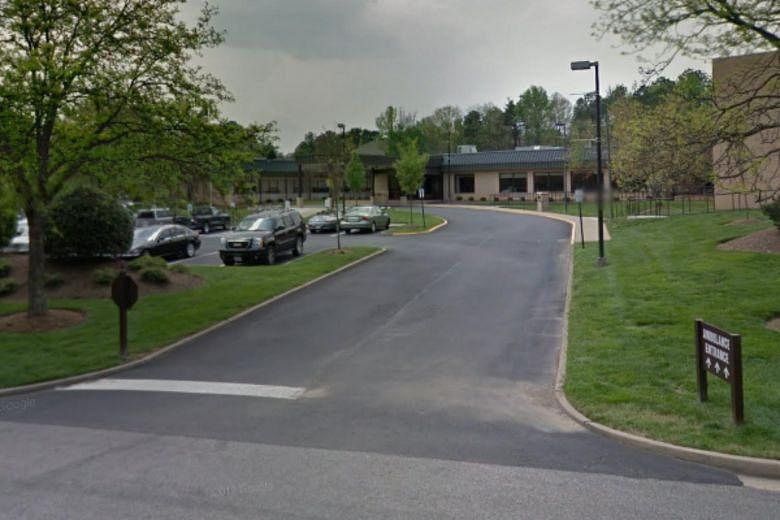RICHMOND, VIRGINIA (NYTIMES) - Even before the first resident tested positive for the coronavirus at a nursing home in Richmond, Virginia, staff members were worried.
As many as three people shared one room, supplies were hard to come by, and the home did not have as many nurses as it needed. All of these factors made it an ideal place for the virus to spread, and it quickly did, with catastrophic results.
At first, only two out of about 160 residents were sick with the virus. One was sharing a room with a woman in her 80s; she contracted the virus, too, and later died.
Now, about a month later, at least 45 residents of the nursing home, the Canterbury Rehabilitation and Healthcare Centre, have died after falling ill with the virus, the highest known death toll at a long-term care facility in the United States, according to an analysis of case data by The New York Times.
The facility has struggled to stop the outbreak, which has killed more than a quarter of its residents and infected about 80 per cent of them, in part because of a lack of resources. Most of its residents rely on Medicaid.
"We were shocked," said Dr Jim Wright, the facility's medical director. "We thought we had it relatively contained until the results started coming in. And that revealed to us how far behind we were."
The Times has identified more than 2,500 nursing homes and other long-term care facilities across the United States with coronavirus cases. More than 21,000 residents and staff members at those facilities have contracted the virus, and more than 3,800 have died.
Even those figures are an undercount, but they go beyond what states have reported. The Times only included cases that have been confirmed by a state or county government agency or by a long-term care facility. Many states, counties and facilities have declined to provide information or provided partial information.
The Times included in its count nursing homes, assisted-living facilities, memory care facilities, retirement and senior communities, and long-term rehabilitation facilities.
The Times has tracked hundreds of clusters of coronavirus cases across the country. The 10 deadliest have been in nursing homes and long-term care centres, including the Life Care nursing home in Kirkland, Washington, which was linked to at least 43 coronavirus deaths, and the Soldiers' Home in Holyoke, Massachusetts, a nursing home for veterans where at least 36 deaths have been linked to the virus. Other long-term care centres in Indiana, Maryland and Massachusetts were each tied to more than 20 coronavirus deaths.
In New York, which has had the heaviest concentration of deaths from the coronavirus, nursing homes have been hit particularly hard, with more than 2,700 deaths at nursing homes and adult care facilities - roughly 1 in 4 deaths statewide.
Many homes in New York have had to add refrigerator trucks as temporary morgues or rely on air conditioners to keep bodies from decaying because the death toll has overwhelmed funeral homes.
Families, barred from visiting since March 13, have complained bitterly about a lack of information coming from the facilities as home administrators scramble to keep enough workers on staff. Few had adequate supplies of masks or gowns, or access to testing.
Though the nursing home outbreaks have been far deadlier, there have been larger clusters of cases. More than 500 Navy sailors on the USS Theodore Roosevelt have been infected in Guam, and more than 500 inmates and guards have been infected at Chicago's Cook County Jail. Hundreds more cases have been linked to a meatpacking plant in South Dakota and a prison in Michigan.
The facility in Richmond, surrounded by churches, apartments and suburban homes, provides rehabilitation and long-term care in a "modern and tranquil setting," according to its website. But recently, it has turned into one of the deadliest hot spots for the virus that has killed more than 25,000 people across the country.
The facility has a one-star health inspection rating from Medicare, meaning there are more health risks there than at the average nursing home. In October, during the most recent review, federal inspectors found 23 deficiencies and said that staff members had failed to follow infection-control procedures for at least one resident. The staff corrected the error within days, and a new owner took over this year.
Canterbury has better access to protective gear now than it did a month ago, Dr Wright said, but staff members still do not have enough disposable gowns to put on a new one every time they switch patients. Instead, they have patient-specific gowns that they reuse. About 20 staff members have fallen ill with the virus, he said.
Dr Wright is also the only doctor currently at Canterbury after another doctor, fearing he had been exposed to the virus, quarantined himself. But after 14 days, he did not return. Dr Wright said his departure left the nursing home in "a bit of a crunch."
To keep up with the devastating toll the virus was taking on the facility's patients, Dr Jennie Webb-Wright, Wright's wife, who is also a physician with a nearby hospital system, spent three weeks volunteering at the Canterbury facility.
The nursing home's chronic shortage of nurses as well as its population of older, poor residents who have limited access to the outdoors made it easy for the virus to wreak havoc.
"That's what a virus wants," Dr Jim Wright said. "A number of people with multiple illnesses, living very closely. Viruses love that."
Dr Wright warned that he does expect more deaths but said that the virus - finally - appeared to be letting up. Residents are recovering, and the rates of deaths and new cases have both dropped.
"That's a hopeful sign," he said.











